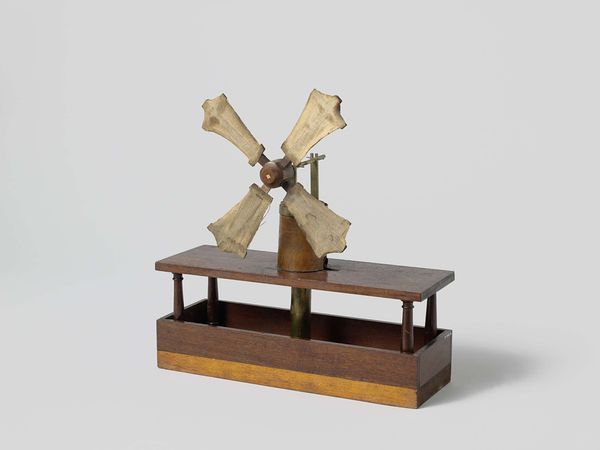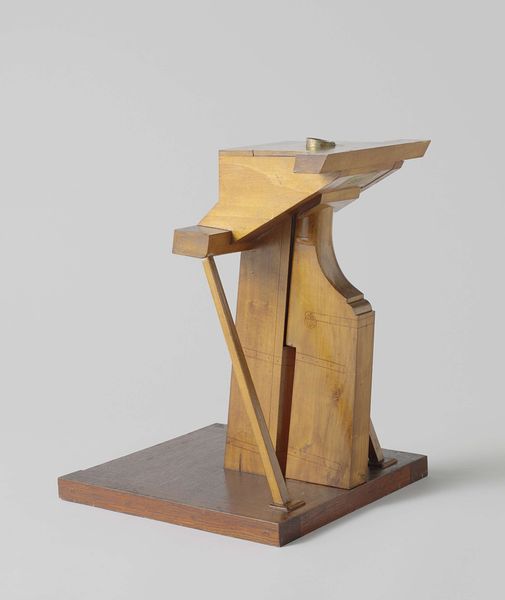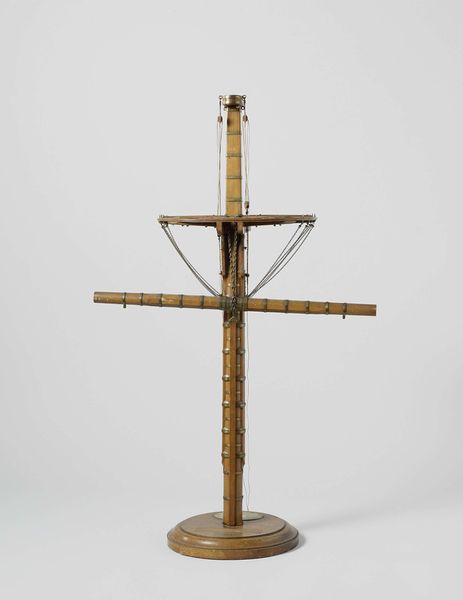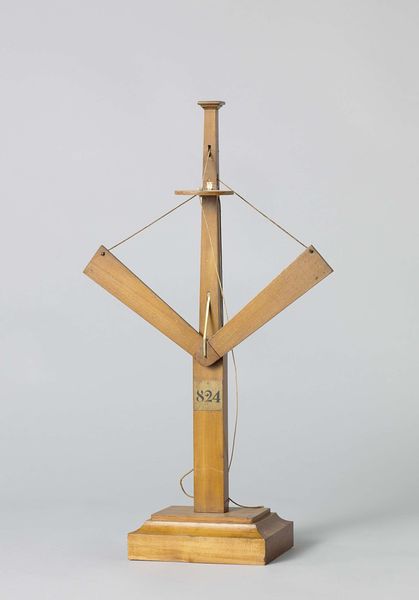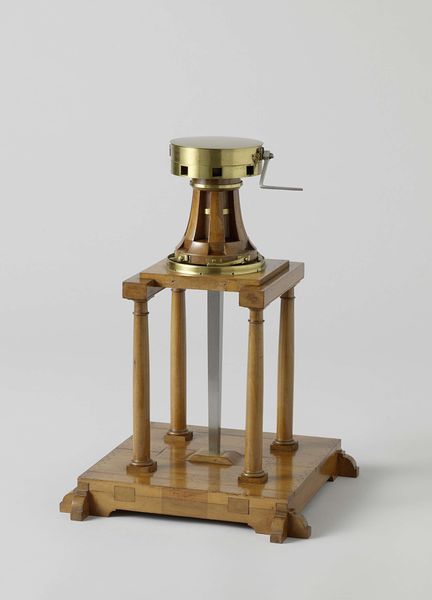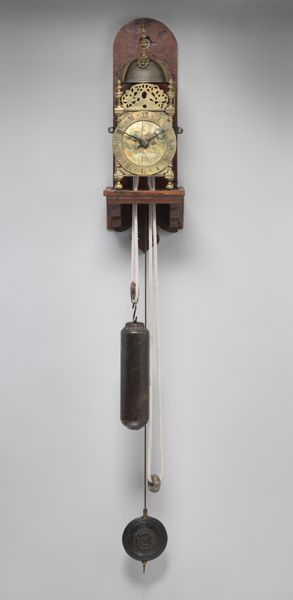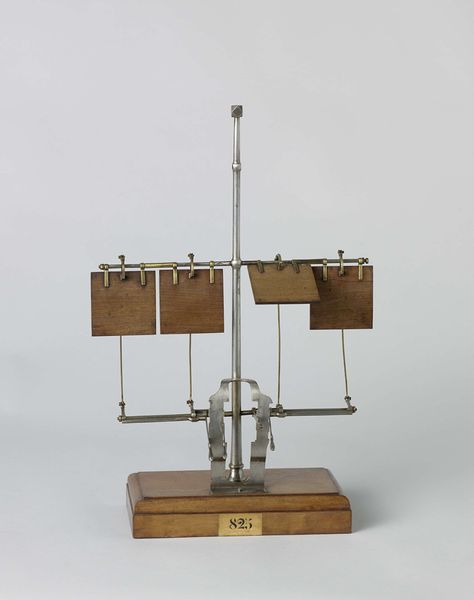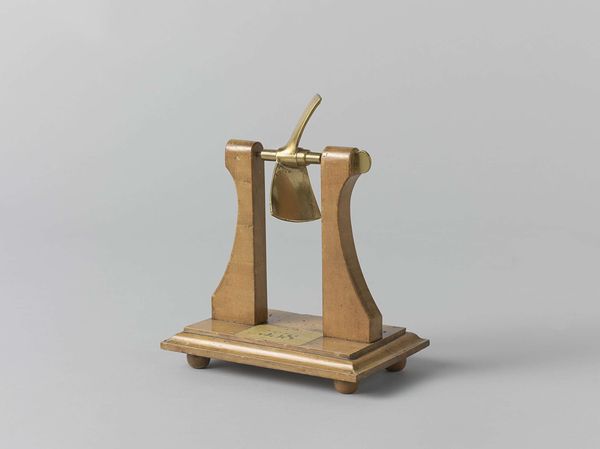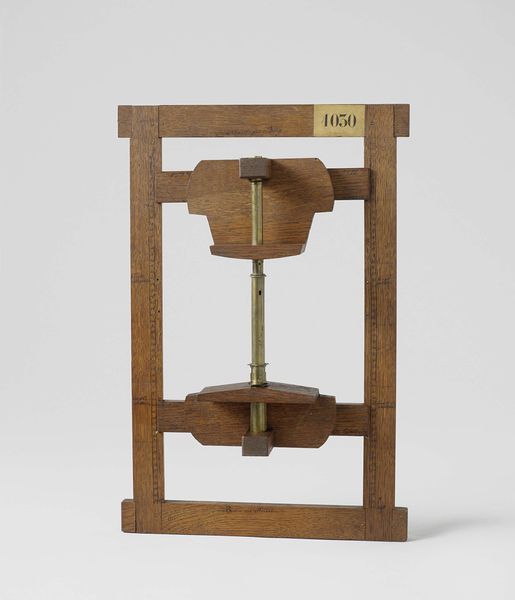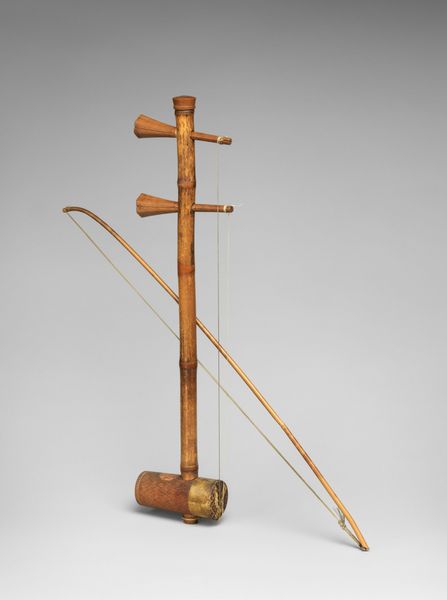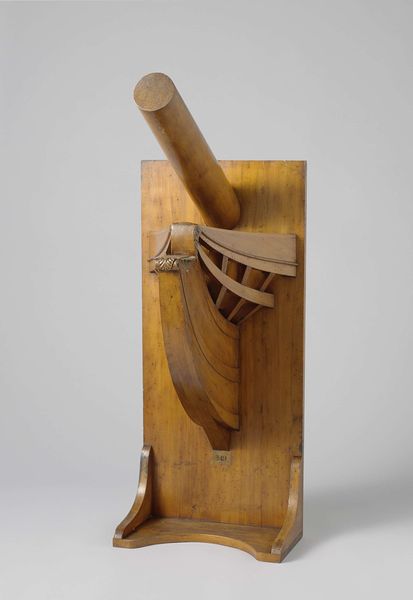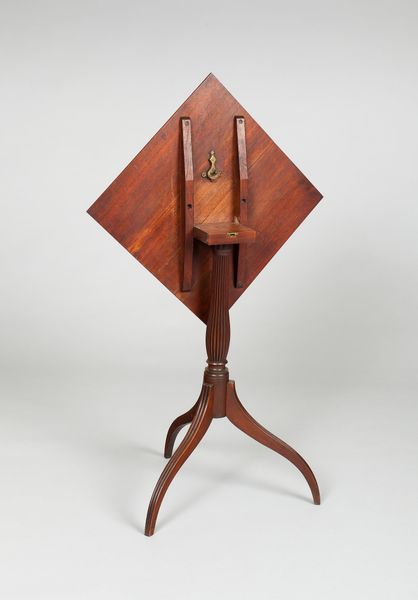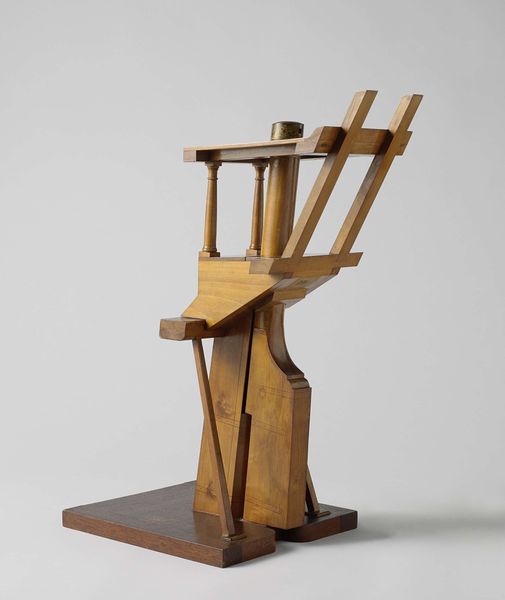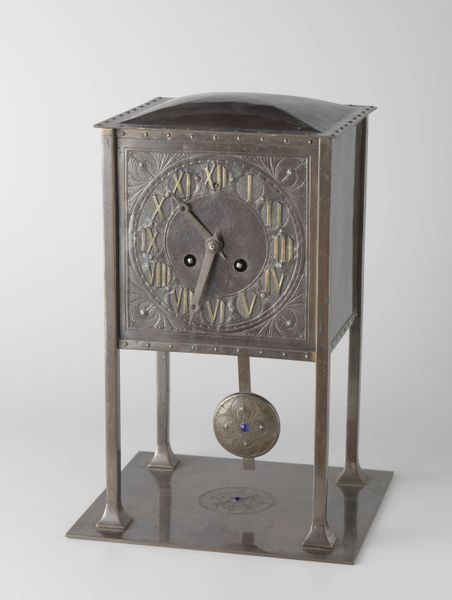
metal, wood
#
neoclacissism
#
metal
#
geometric
#
wood
#
history-painting
Dimensions: height 84 cm, width 31.5 cm, depth 25 cm, radius of main arm length 15.3 cm, radius of wings length 13.7 cm
Copyright: Rijks Museum: Open Domain
This is a model of an optical telegraph, made anonymously in an unknown time and place. Its geometric shapes and emphasis on communication raise crucial questions about art's public role. Optical telegraphs like this one were the internet of their day. In late 18th- and early 19th-century Europe, governments used these semaphore systems to quickly relay messages across long distances. France, for example, used the system to coordinate its armies during the Napoleonic Wars. The visual language of the semaphore was a code available only to trained operators. Knowledge of the code, and control of the message, was in the hands of the state. While we don’t know its country of origin, this model serves as a reminder of the complex relationship between communication, power, and knowledge in early modern Europe. Understanding its function requires historical research into military and political history, and into the social control of information. Only then can we fully appreciate its meaning.
Comments
rijksmuseum about 2 years ago
⋮
Optical telegraphs were used to transmit messages. Different positions of the arms communicated words or letters. Chappe’s design for this type of telegraph was used in France from 1792 until the introduction of the electric telegraph (1844). Between 1810 and 1813 there was an optical telegraph connection between Amsterdam and Paris, which replaced the earlier Batavian coastal telegraphs.
Join the conversation
Join millions of artists and users on Artera today and experience the ultimate creative platform.
